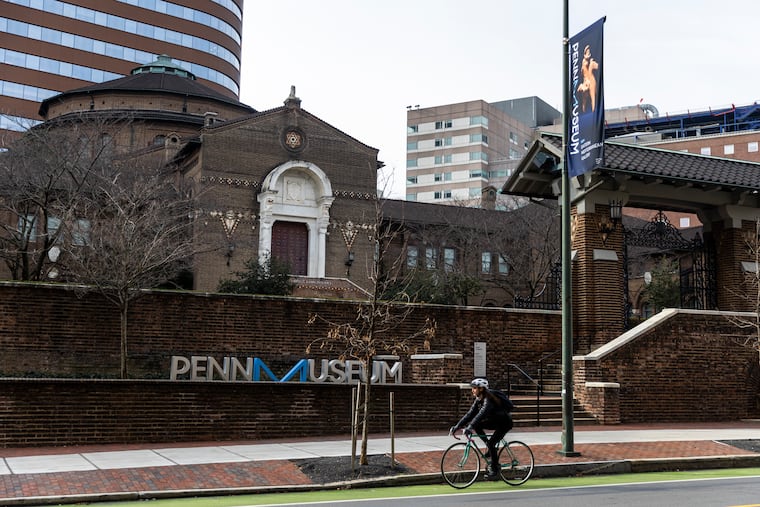The Penn Museum will stop displaying most human remains
The news comes amid an international debate surrounding the ethical use and display of human remains in museums like Penn and Mütter.

The Penn Museum is significantly changing how it displays and handles human remains. In an updated policy, the museum has announced that it will no longer display “exposed” human remains. Only wrapped remains such as mummies, or enclosed remains like coffins will be considered for display.
The museum will also bolster its efforts to repatriate human remains beyond the Native American Graves Protection and Repatriation Act (NAGPRA), adding five new staff roles responsible for researching human remains and ensuring their repatriation. There are currently two staffers specifically working on NAGPRA. Additionally, three new hires will focus on biological anthropology, according to a museum spokesperson.
“Confronting our institutional history tied to colonial collection practices requires continuous examination and assessment of our policies. It is our moral, ethical, and social responsibility,” said museum director Christopher Woods in a statement.
In considering what the museum will display, Penn will prioritize “human dignity over public access,” according to the policy. The guidelines also impact educational programs and research access: Human remains that were collected unethically and without consent “will not normally be available for research, teaching, or display.” In undergraduate classes, lower-level students won’t handle human remains directly, but upper-level undergraduate and graduate classes may include remains from the collection, subject to approval by Penn’s human remains committee.
The news comes amid an international debate surrounding the ethical use and display of human remains in museums, with particular concerns about provenance and past collecting methods. The Mütter Museum has also been mired in similar conversations and will soon begin seeking public feedback on the future of its human remains collection.
» READ MORE: Penn, Temple, Mütter among U.S. institutions still holding the remains of Native Americans
The Penn collection contains remains from more than 10,000 people from around the world, including white supremacist Samuel Morton’s historic Cranial Collection, which the museum acquired in 1966. In 2021, Penn apologized for its “unethical possession” of these human remains and promised to repatriate skulls of Black Philadelphians and enslaved people from Cuba, among others in Morton’s collection. Next spring, 20 skulls of Black Philadelphians are expected to be interred.
Concerns about Penn’s handling of human remains have existed for years, especially regarding those from victims of the 1985 MOVE bombing, when police bombed a home in West Philly and killed 11 people, including five children. Some remains were obtained and subsequently used for research and in forensic anthropology classes at Penn and Princeton, without consent.
Penn’s announcement was met with skepticism from activists like Abdul-Aliy Muhammad who said the museum has not done enough. A month ago, Muhammad and relatives of victims from the MOVE bombing alleged that Penn still has a set of human remains that has not been accounted for. The museum said it plans to investigate the claims.